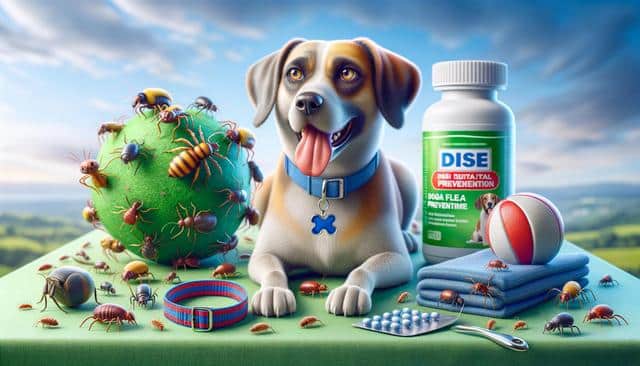
A Practical Guide to Keeping Your Dog Comfortable and Flea-Free
Understanding the Flea Lifecycle
To effectively prevent fleas from infesting your dog and home, it’s essential to understand their lifecycle. Fleas go through four stages: egg, larva, pupa, and adult. The entire cycle can be completed in as little as three weeks under optimal conditions, which means populations can grow rapidly. Eggs are laid by adult fleas on the host animal and can fall off onto bedding, carpets, and other areas your dog frequents. Larvae hatch from the eggs and feed on organic debris, before spinning a cocoon and transitioning into pupae. Adult fleas emerge from these cocoons when they sense the presence of a host. Recognizing these stages helps in determining the best times and methods for intervention to break the cycle effectively.
Effective Flea Treatments
With a clear understanding of the flea lifecycle, choosing the right treatments becomes more straightforward. There are several options available for keeping fleas at bay:
- Spot-on treatments: These are applied directly to the dog’s skin, typically once a month, and provide long-lasting protection by killing fleas on contact.
- Oral medications: Available in chewable form, these medications work systemically to kill fleas, often providing a swift and effective solution.
- Flea collars: Modern flea collars can offer months of protection, using active ingredients that disperse over the dog’s coat.
- Shampoos and sprays: Useful for immediate relief, these can kill fleas on contact but might require frequent application.
It’s essential to consult with your veterinarian to choose the right product based on your dog’s health, age, and lifestyle.
Creating a Flea-Free Home Environment
Preventing fleas isn’t only about treating your dog; it’s equally important to maintain a clean home environment. Flea eggs and larvae can thrive in carpets, rugs, and upholstery:
- Vacuum regularly: Pay special attention to areas where your dog sleeps or spends a lot of time. Dispose of the vacuum bag promptly to prevent reinfestation.
- Wash bedding: Clean your dog’s bedding and any removable covers in hot water weekly to kill any eggs or larvae.
- Use flea sprays or diatomaceous earth: These can be applied to carpets and upholstery to kill fleas at various lifecycle stages.
By keeping your home clean and using these preventive measures, you significantly reduce the risk of a flea infestation.
Natural and Holistic Approaches
For those seeking natural alternatives, several options can help repel fleas without the use of chemicals. Essential oils like lavender and cedarwood are known for their flea-repelling properties. Adding a few drops to a carrier oil and applying it to your dog’s collar can create a natural deterrent. Additionally, maintaining a balanced diet and ensuring your dog receives regular grooming can enhance their natural defenses against fleas. While natural methods can be beneficial, they may not be as immediately effective as conventional treatments, so it’s often best to use them in conjunction with traditional methods.
Monitoring and Maintenance
Continuous vigilance is key to keeping fleas at bay. Regularly checking your dog for signs of fleas, such as excessive scratching, biting, or red patches of skin, allows for early intervention. Using a fine-toothed flea comb can help you physically remove fleas and their eggs from your dog’s coat. Make flea prevention a part of your routine care by scheduling regular vet check-ups and sticking to a preventive treatment schedule. Consistency in these efforts will not only keep your dog comfortable but also reduce the likelihood of an infestation.
Conclusion
In summary, flea prevention is an ongoing process that requires a combination of effective treatments and diligent home care. By understanding the flea lifecycle, choosing appropriate treatments, maintaining a clean home, exploring natural alternatives, and consistently monitoring your pet, you can significantly reduce the risk of fleas. These strategies not only enhance your dog’s comfort but also contribute to a healthier home environment.